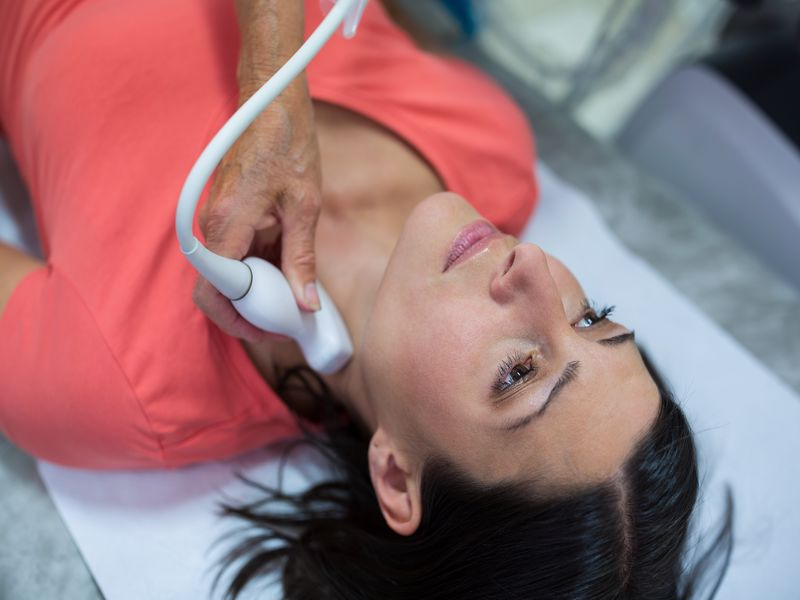New phase 3 findings suggest that up to 40% of lumpectomies leave positive margins requiring a second surgery, but a new fluorescent imaging agent used with a direct visualization system may improve complete resection rates.
Pegulicianine (Lumisight) is an investigational activatable fluorescent imaging agent used with a new direct visualization system. In the study, it helped identify residual tumors or prevent a second surgery in about 10% of patients.
Researchers wrote that the use of both the agent and the direct visualization system, developed by Lumicell, Inc. and currently under review by the U.S. Food and Drug Administration, could provide more complete resections and prevent re-excisions in patients with early breast cancer.
The findings were published online on April 27 in NEJM Evidence and subsequently presented at the annual meeting of the American Society of Breast Surgeons.
Local recurrence following a lumpectomy increases the risk of dying from breast cancer, and the risk of local recurrence is directly linked to inadequate tumor removal during the procedure. Approximately 20% to 40% of lumpectomies result in positive margins after surgery.
To improve patient outcomes, researchers evaluated whether a new fluorescence-guided surgery system could help surgeons achieve more complete resections during lumpectomies.
In the Imaging for New Surgical Tumor Excision (INSITE) trial, 392 patients were randomized to undergo surgery with pegulicianine fluorescence guidance (n = 357) or standard lumpectomy (n = 35).
To prevent surgeons from performing smaller lumpectomies with the expectation of using the pegulicianine fluorescence-guided system, patients were randomly assigned to the fluorescence-guided surgery group or control group only after the surgeon had completed the standard lumpectomy.
The authors explained, "Randomization was not designed to provide a control group for device performance analysis."
"In this study design, each patient undergoing surgery with pegulicianine fluorescence guidance served as their own control," they added. Researchers compared final margin pathology after standard lumpectomy and guided surgery. Control group patients were included in the safety analysis.
Study participants were women aged 18 or older undergoing lumpectomy for stage I-III breast cancer and/or ductal carcinoma in situ. All patients received 1.0 mg/kg pegulicianine via a 3-minute intravenous infusion 2 to 6 hours before surgery.
The agent emits a signal in residual tumor areas, and a handheld probe illuminates the cavity during surgery. The authors stated that a tumor detection algorithm then analyzes and displays images to the surgeon in real-time—a process that adds about 7 minutes to the surgical procedure.
Researchers identified invasive cancers in 316 patients and in situ cancers in 76 patients. Residual tumors were detected after standard lumpectomy in 27 of the 357 patients (7.6%) in the treatment group. For 22 patients, standard margin assessments deemed cavity orientations negative.
With the use of pegulicianine fluorescence-guided surgery, positive margins converted to negative in 9 of 62 patients (14.5%), potentially preventing a second surgery in these cases.
Overall, the authors stated that pegulicianine fluorescence-guided surgery removed residual tumors in 10% of patients in the study (27 of 357) or prevented second surgeries (9 of 357).
The authors noted that the current study findings confirm the safety and efficacy results of pegulicianine fluorescence-guided surgery and the direct visualization system previously reported in a multicenter feasibility study.
Pegulicianine fluorescence-guided surgery met predefined thresholds for residual tumor removal and specificity at 85.2% but did not meet the predefined sensitivity threshold of 49.3%.
The rate of serious adverse events with pegulicianine was 0.5% (2 patients), similar to other contrast agents. Researchers noted that administration was discontinued in six patients due to side effects.
Serious adverse events included grade 3 hypersensitivity in one patient and an anaphylactic reaction in another. Four additional side effects included an allergic reaction, mild hypersensitivity, nausea, and pegulicianine extravasation. All side effects resolved, and patients transitioned to standard lumpectomy.
Barbara Smith, MD, PhD, the lead investigator and director of the Breast Program at Massachusetts General Hospital and a professor of surgery at Harvard Medical School in Boston, said in a press release, "Overall study findings suggest that more complete breast cancer resection can be achieved with pegulicianine fluorescence-guided surgery and the direct visualization system." She added, "Considering the low complication rate, minimal additional surgery time, and most importantly, the discovery of additional cancer left behind after a lumpectomy, the Lumicell [system] has the potential to be a critical adjunct tool to improve standard care for breast cancer patients."
The authors also noted that the system has the potential to "reduce the burden of additional surgery on patients" and "lower costs associated with returning to the operating room."





